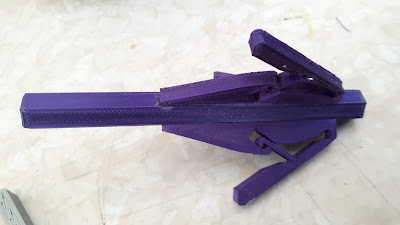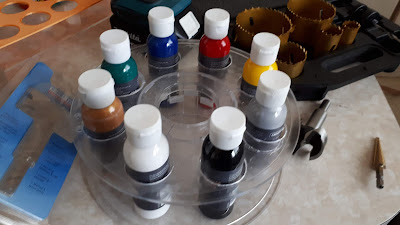As the title says I've been slowly buying new Archery equipment. I took it up in 08 and shot for a while as I thought it would help my mental state then stopped in 09 ish. It turns out my gut feeling was correct and ex forces people who might need to de-stress have it recommended to them as a way to take their mind off things.
The first thing I wanted to do is to make some Beiter Limb alignment gauges by copying a set I borrowed off someone from my new club https://www.facebook.com/TuggeranongArcheryClub alas I couldn't find anyone to lend me some that I could trace or photograph or take home so I could use my vernier calipers on, taking their measurement :-)
 |
| Image stolen from https://www.canadaarcheryonline.com/collections/bow-square/products/copy-of-beiter-tri-liner-tool |
These help you align the limbs to the riser and your string in a straight line down the centre of the bow.
Since I couldn't borrow a set, I just used their principle to make my own and they seem to work fine if a little fiddly to take off.
Then I made a way to carry my new arrows so their vanes / feathers didn't get damaged while transporting them. As it always does, I took a few attempts to get the design right, but I'm very happy and way too excited over this design. :-)
Printed in some old black petg I got from 3dfillies.com The test prints were all done in PLA in some nice colours using the end of rolls of mostly 3dfillies and a roll of esun filament that never seems to end lol. The old esun predates most of the fillies stuff as I didn't use it that much after discovering 3dfilles filament.
One print at each end works so well, and way stronger then you might think ;-D
The bundle of 12 arrows then all fit into an Australia Post mailing tube. The end caps had some open cell foam hot-glued onto them for added protection.
I painted the tube with some acrylic paint and it all turned out better than I could have hoped.
The new bow is a 28 lbs Recurve bow with a WNS Explorer DX Riser, WNS Elite Fibre / Foam limbs. All coming in for a 68'' bow.
































































